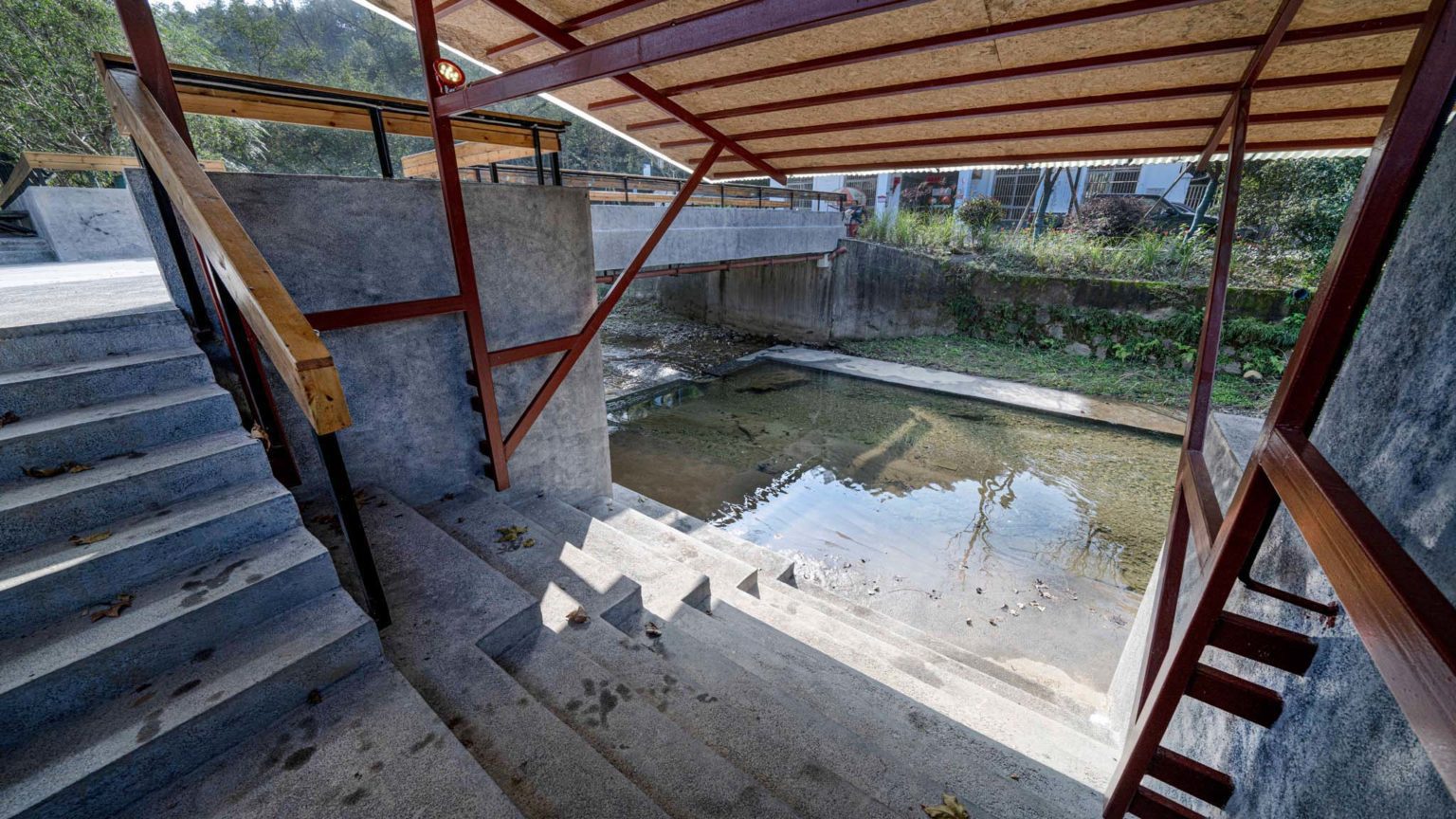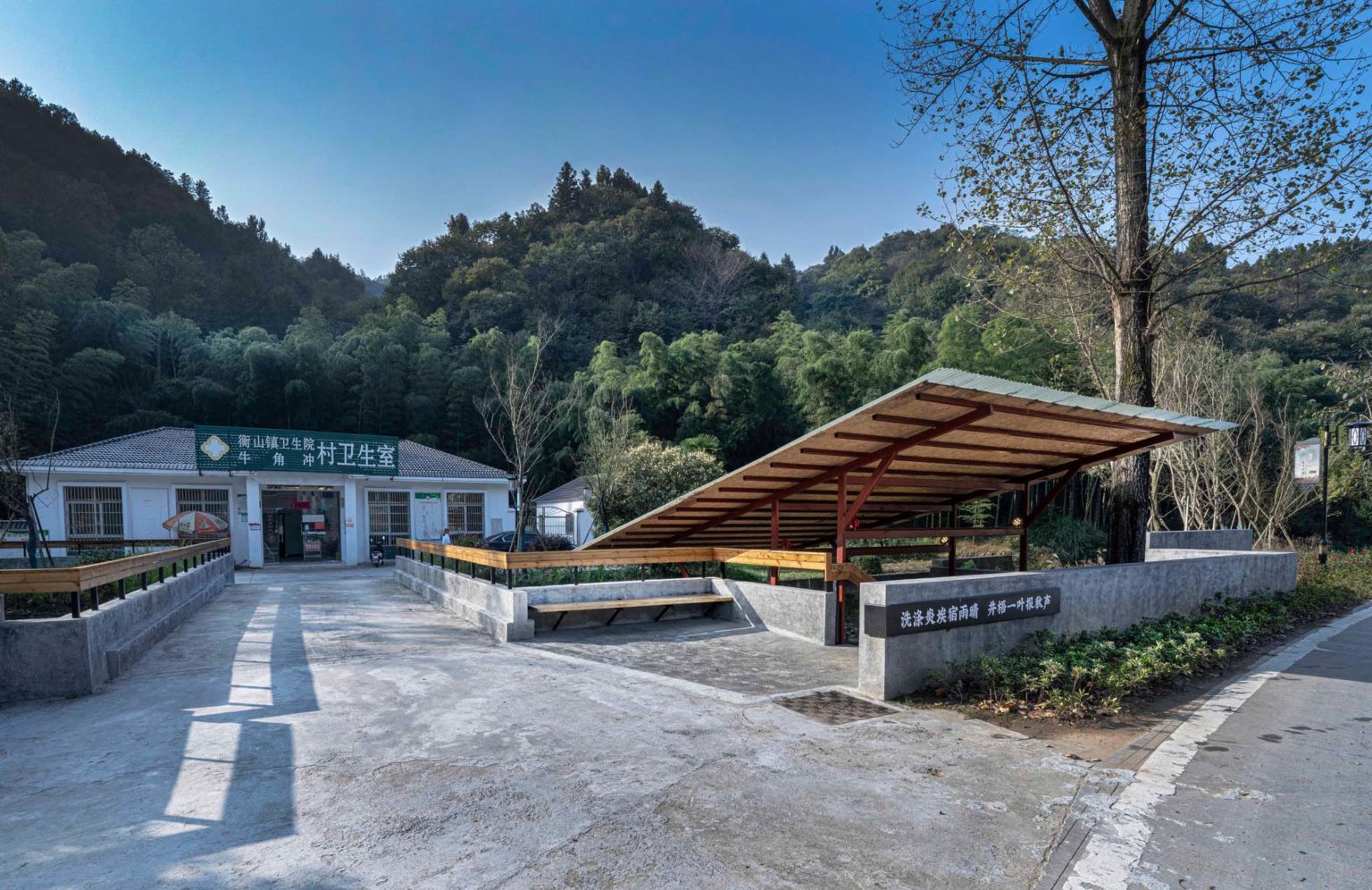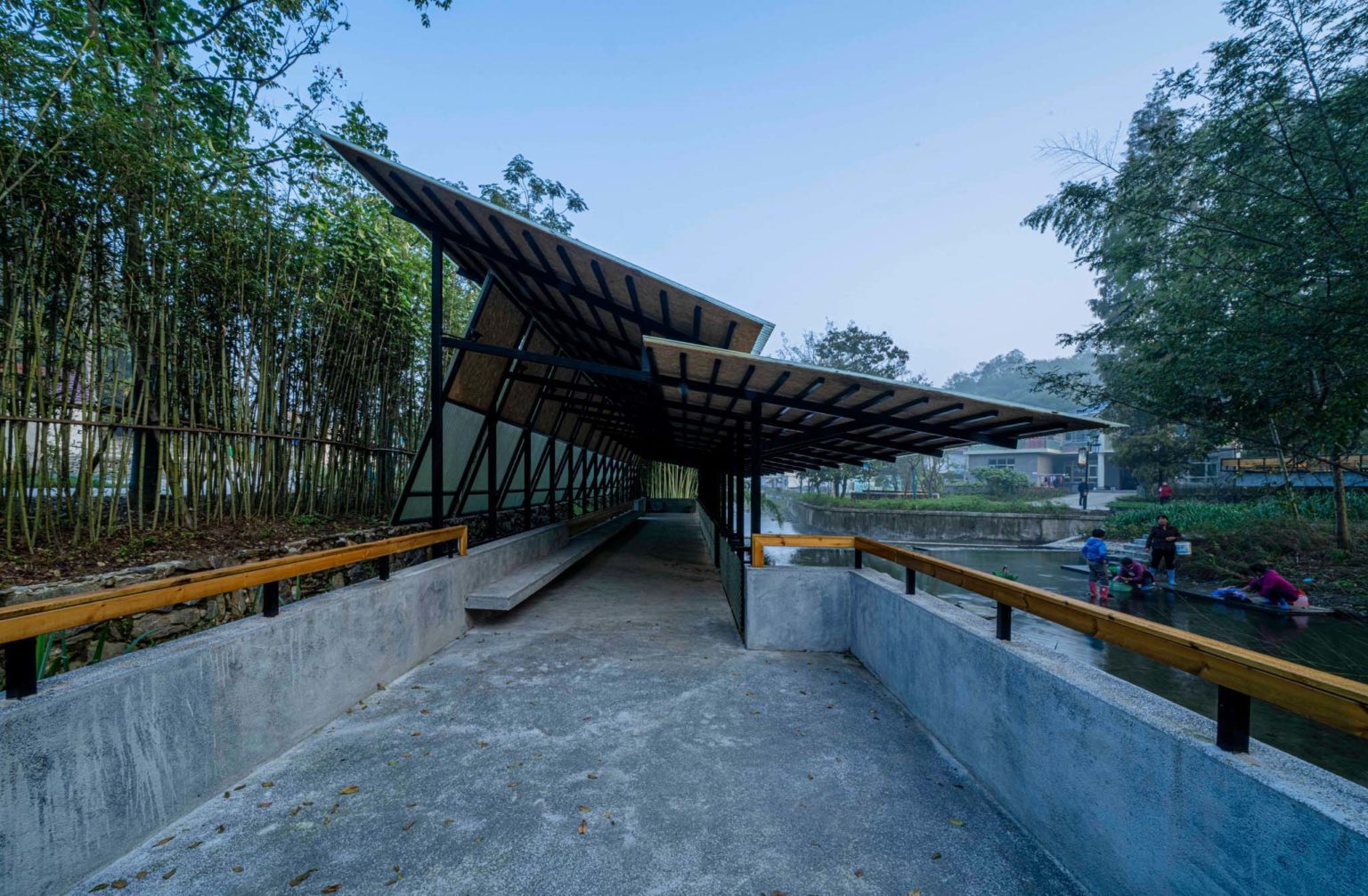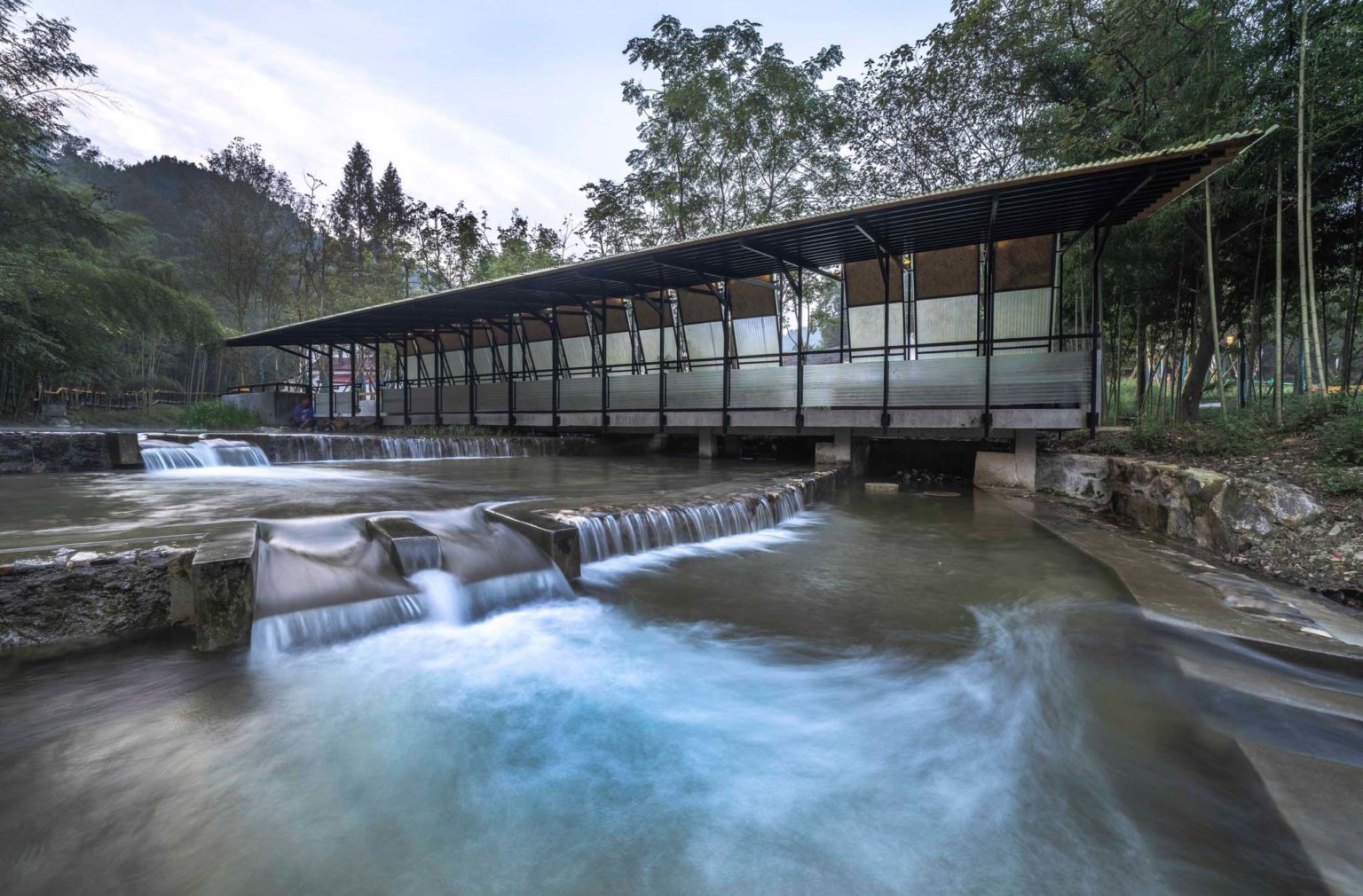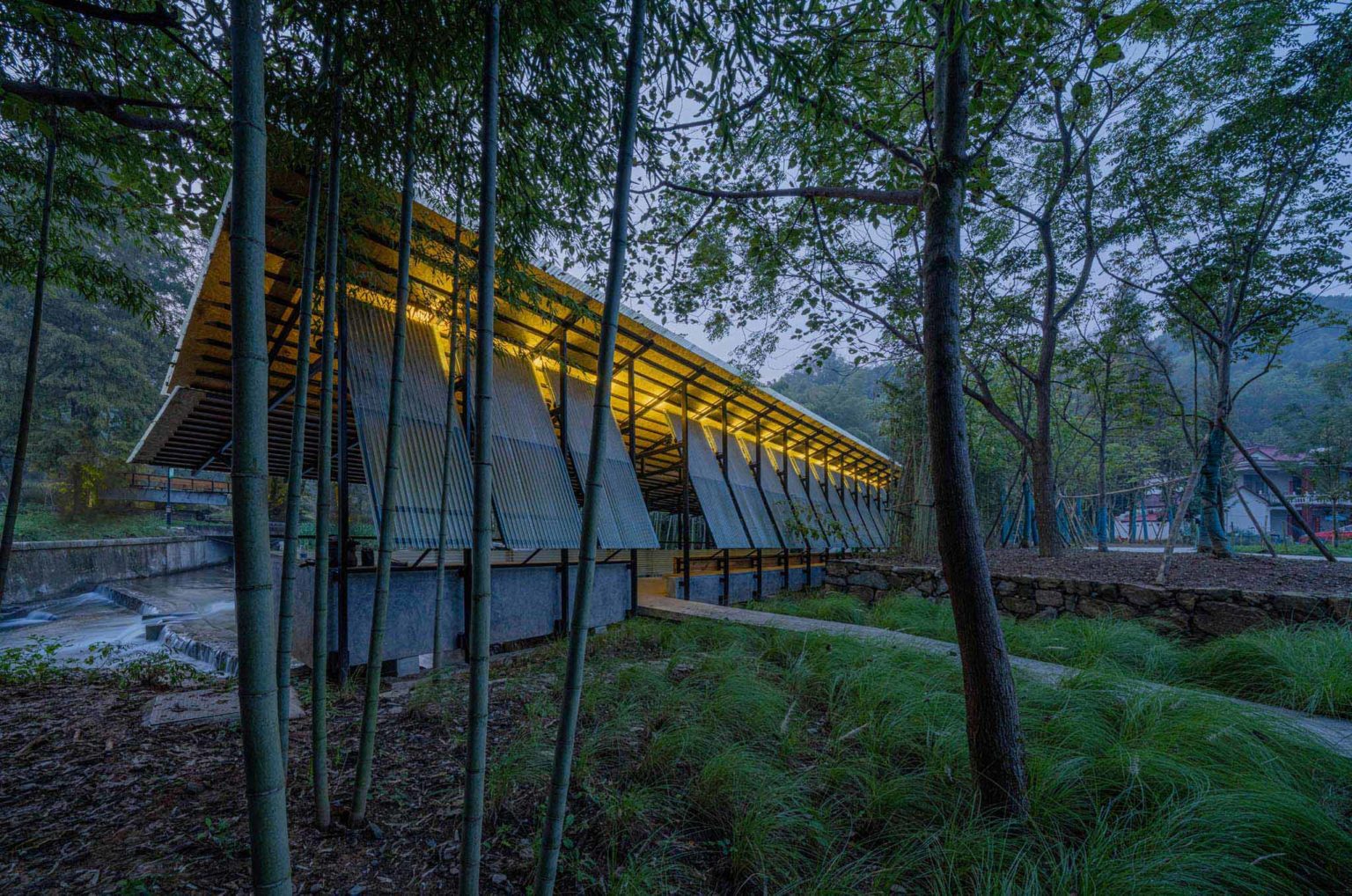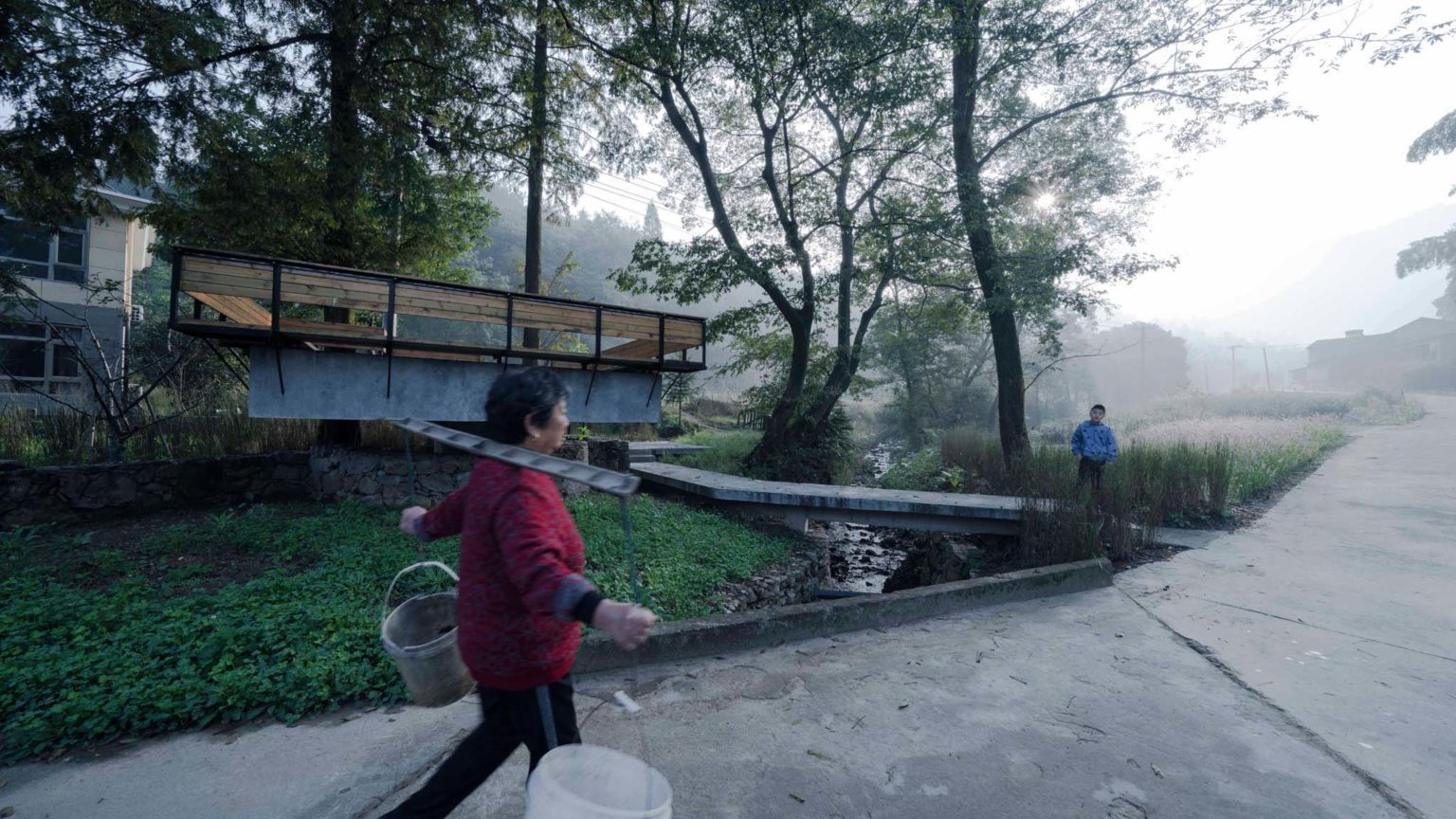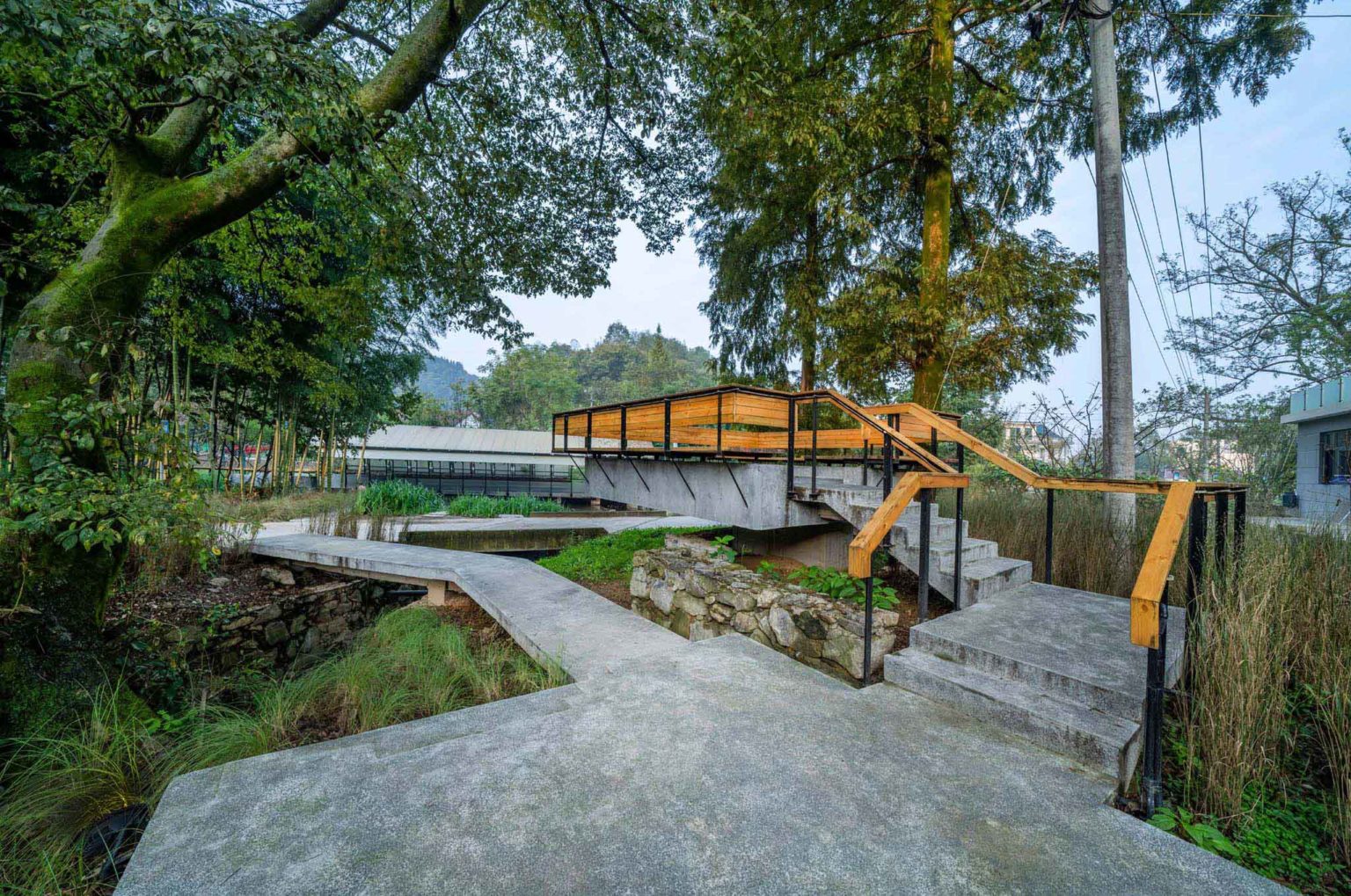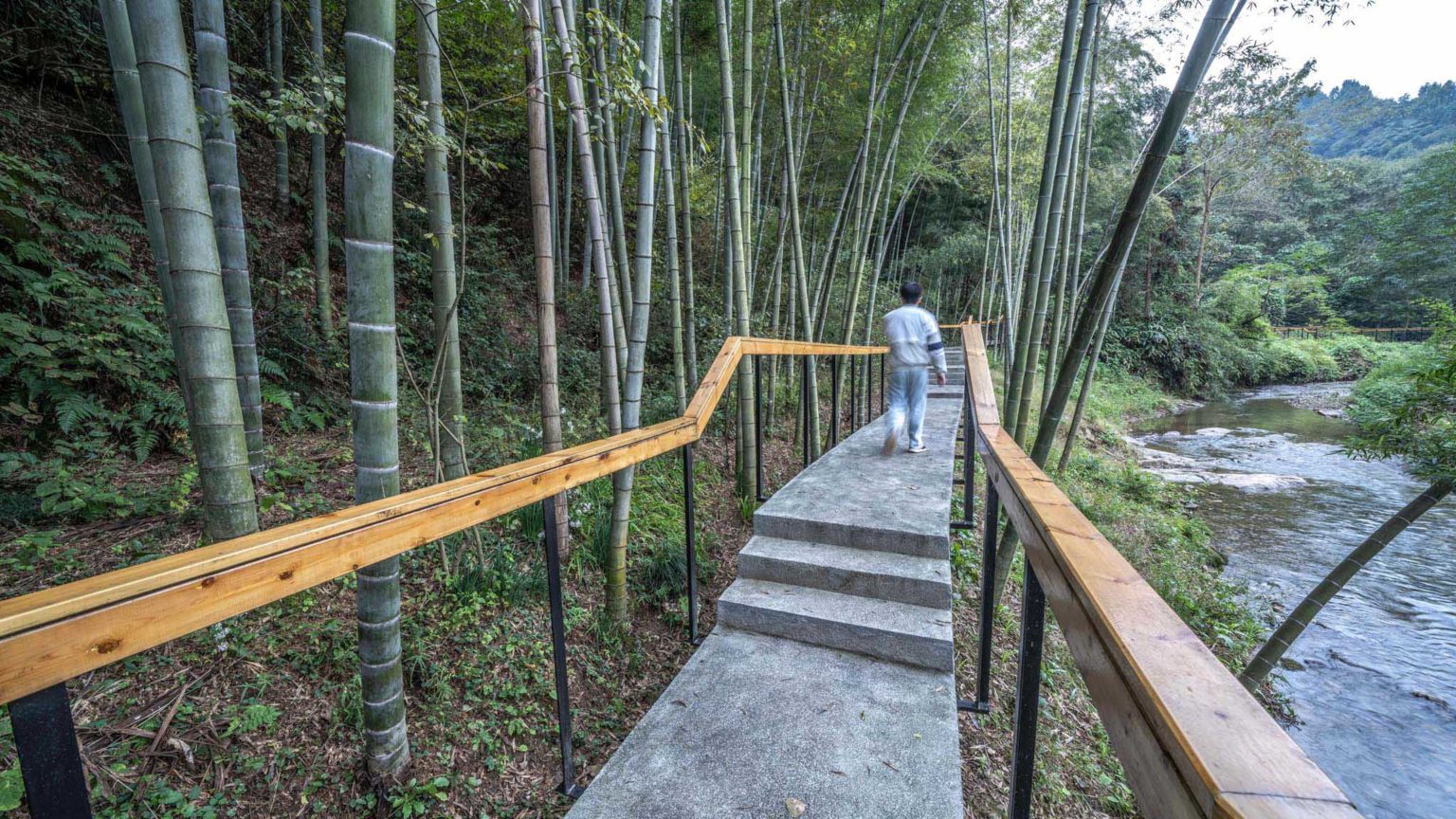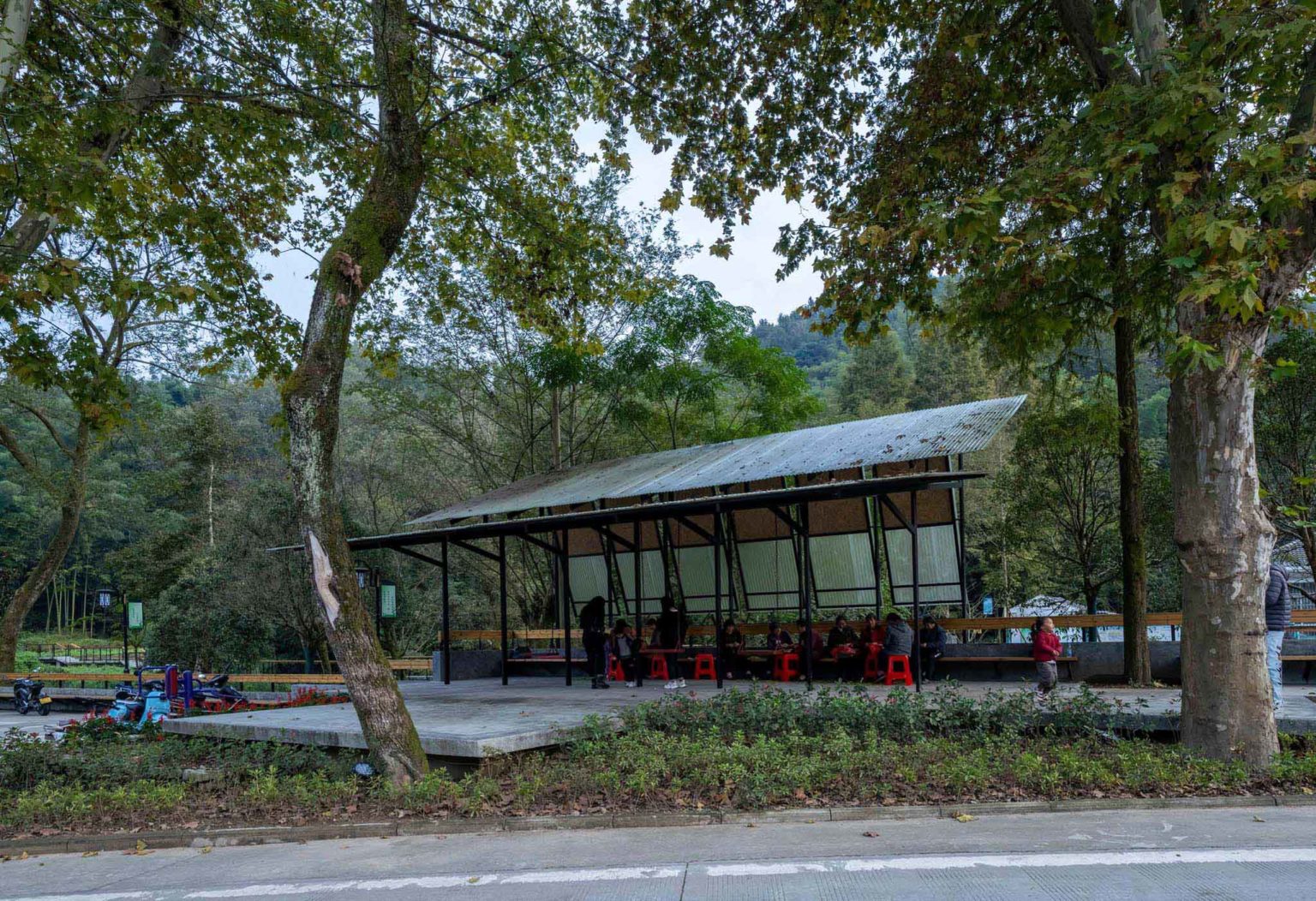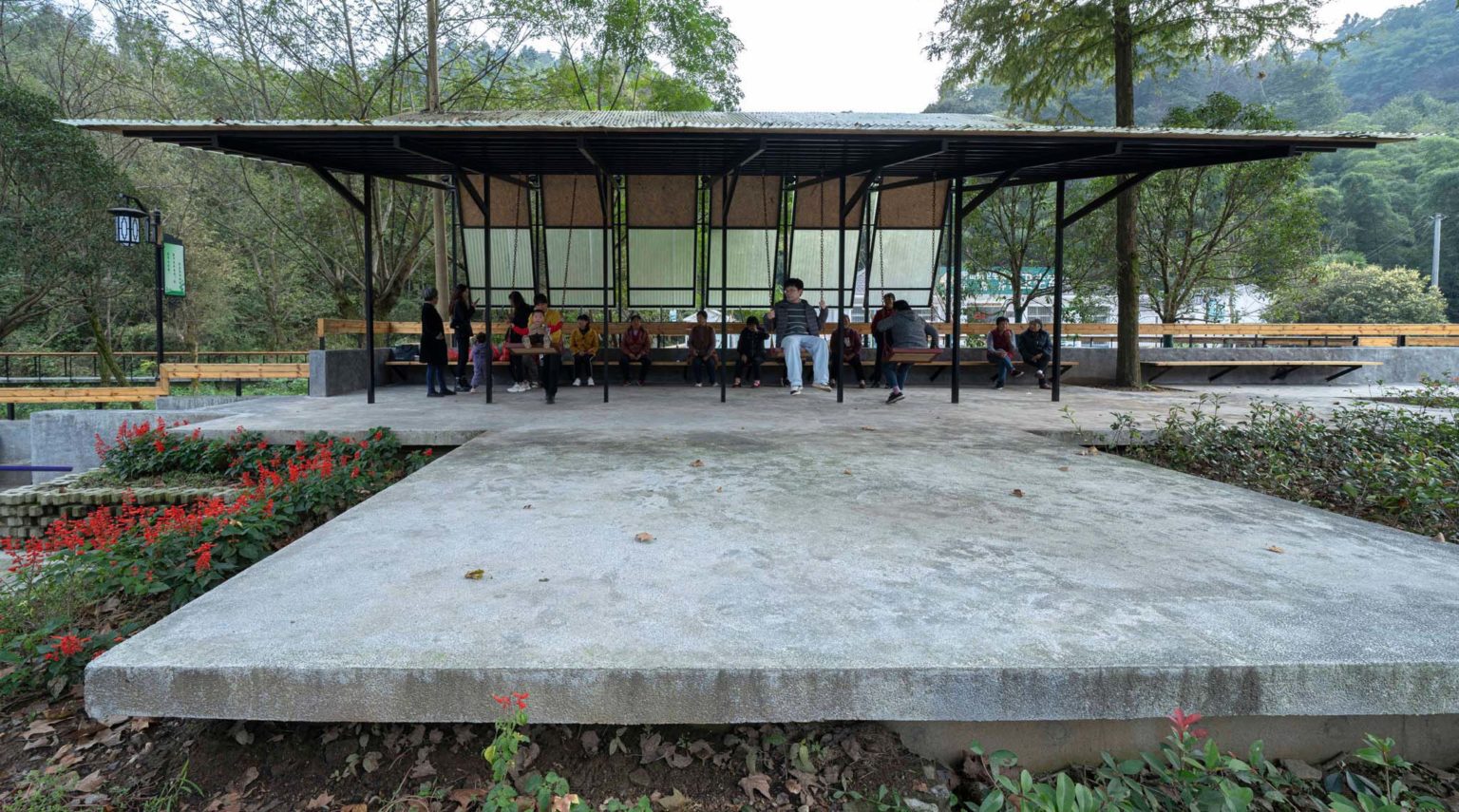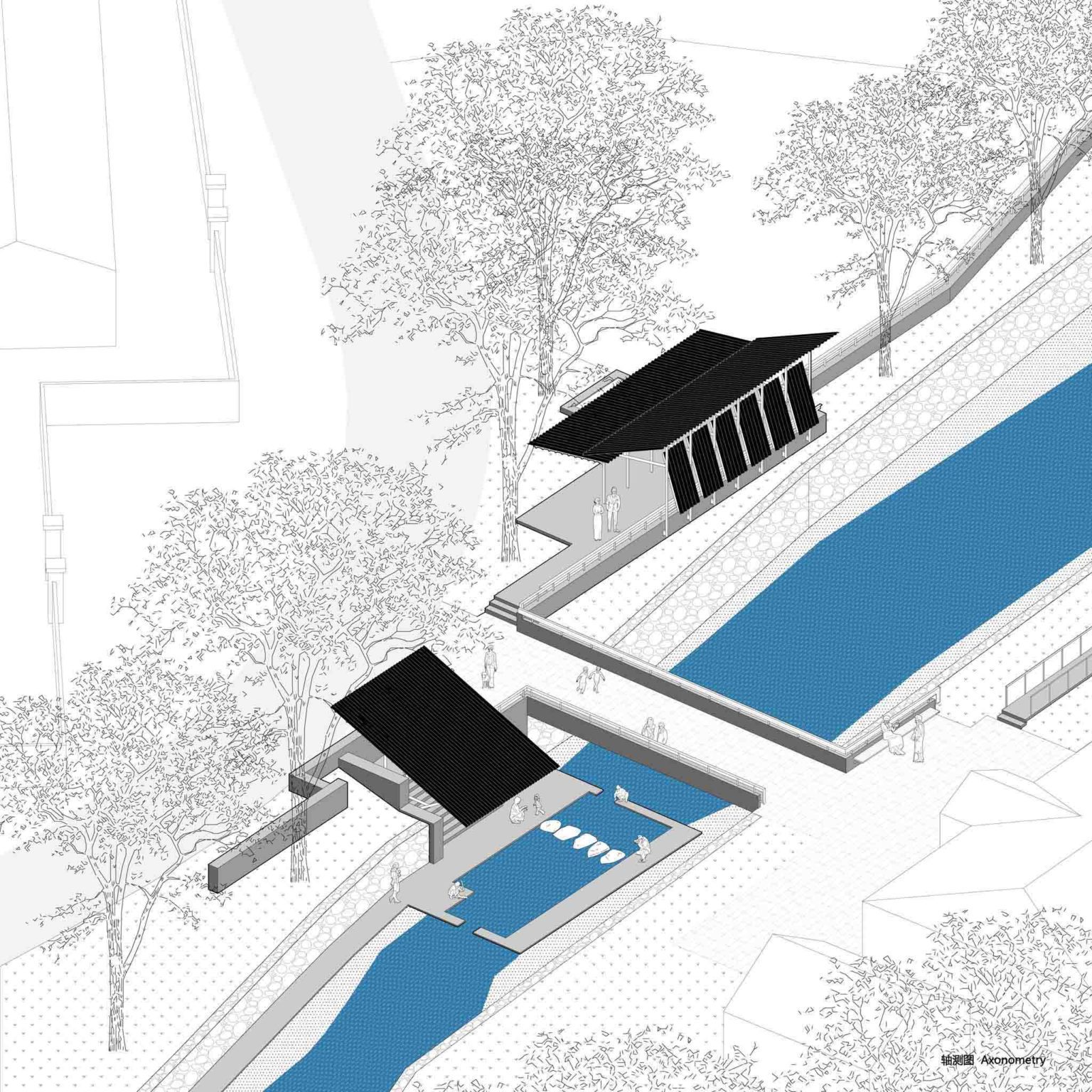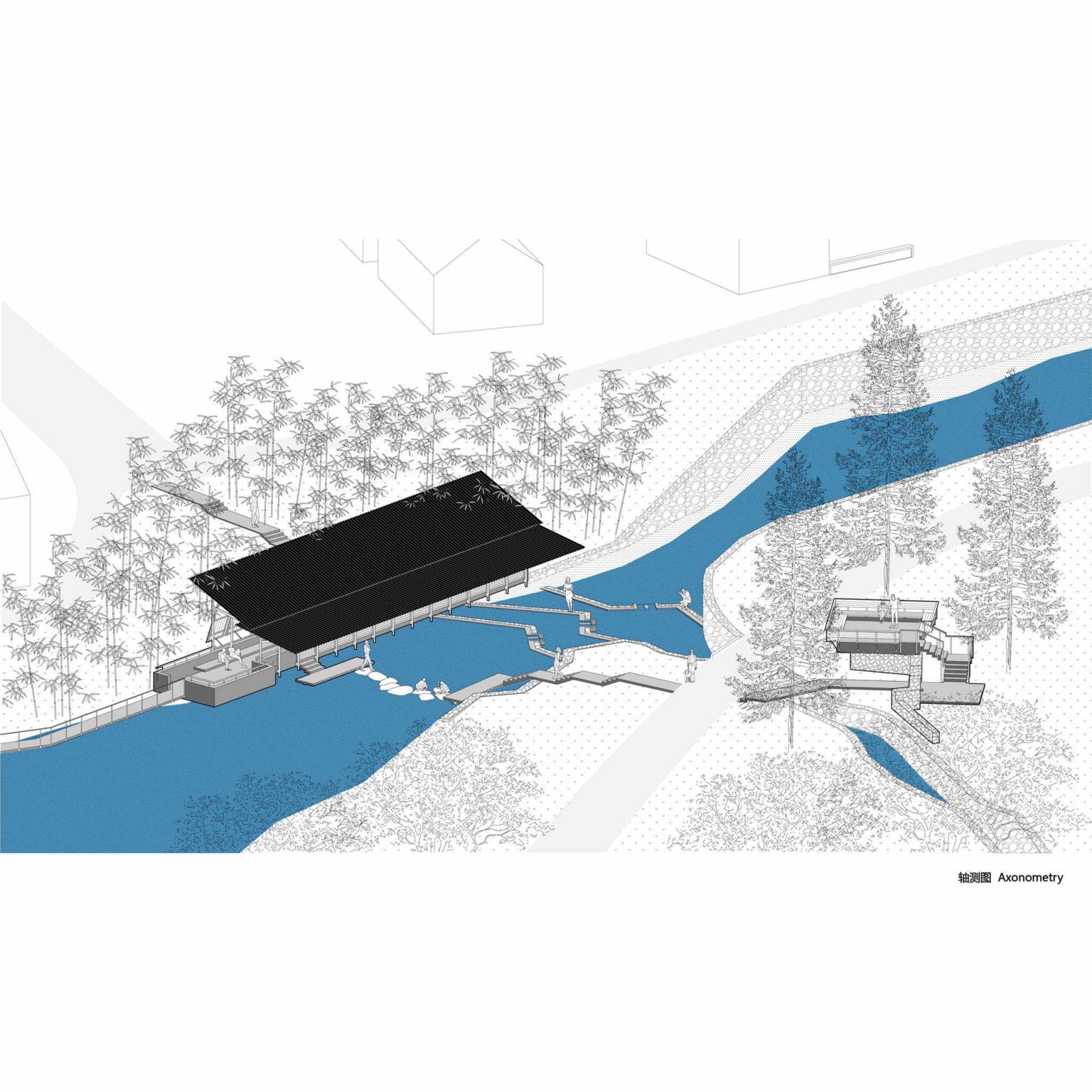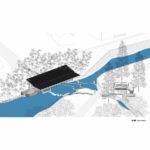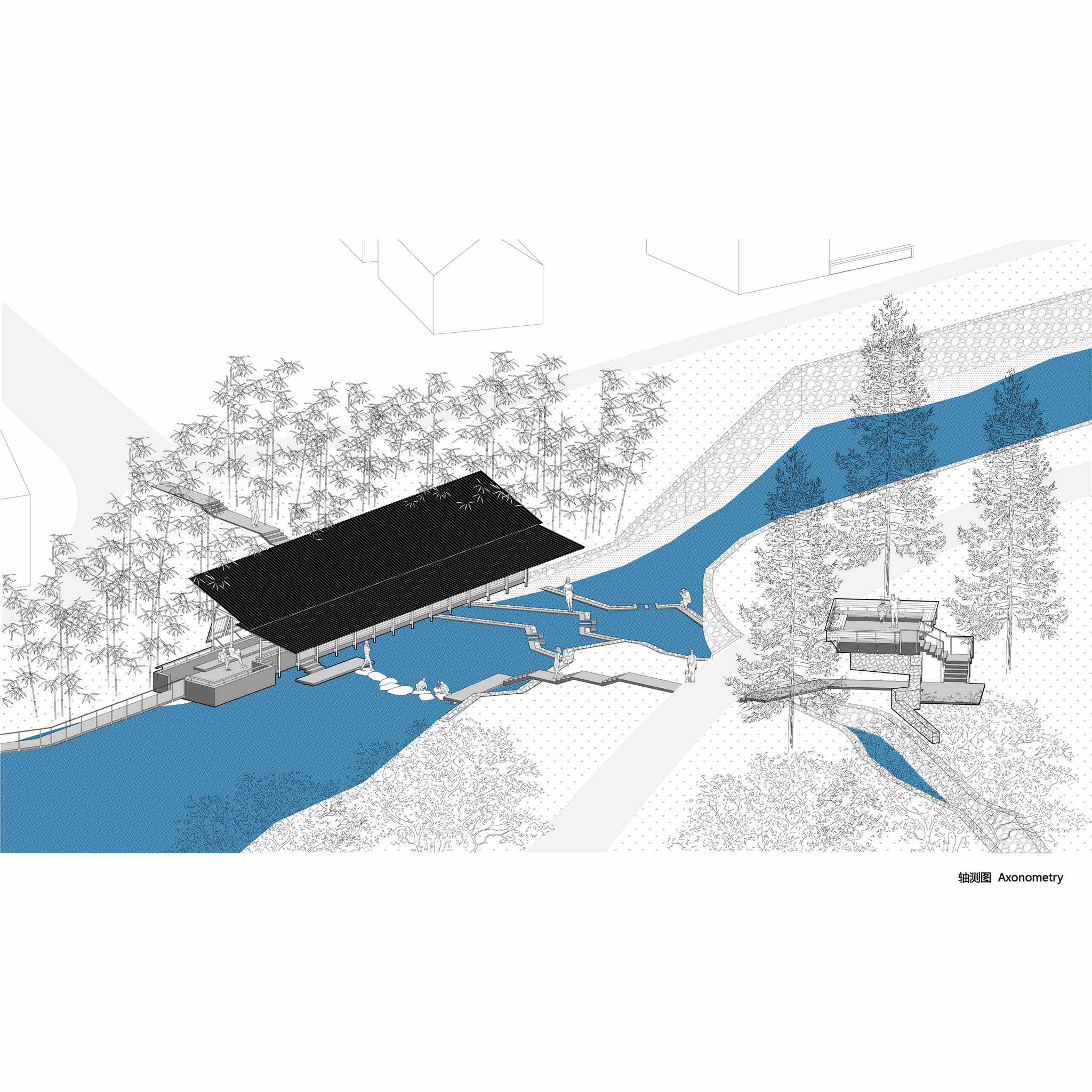Project Credits & Specs:
- Architects: Fu Yingbin Studio
- Photographs: Fu Yingbin Studio
- Location: Niujiaochong Village, Huoshan County, Lu’an City, Anhui Province, China
- Site Area: 13 000 m2
- Year: 2021

Located in the suburb of Huoshan County, Anhui Province, and resting against Dabie Mountain, Niujiaochong Village is a site of great importance in the grand circle of the Nanyue Mountain scenic spot. Because of its important location, it needs both environmental upgrading and development as an important junction point.
With a river running across the Niujiaochong Village, the villagers have built their homes along the river banks, including dwellings, vegetable fields, and bamboo forests. Many daily scenes can be seen along the river. For example, there you can see residents washing clothes and vegetables every day. However, the river course leaves much to be desired due to the perennial lack of governance and maintenance. The upper and lower reaches of the river course are silted because of overrunning weeds and accumulated sediments. And it’s quite primitive and inconvenient to wash clothes in the river. Based on the river course and from the perspective of public space, therefore, this project reexamines the waterfront space to reconstruct the traditional spatial narrative of rural life adjacent to water and reproduce the vitality of rural public space according to the current rural life

Scheme and Design
Two quays for laundry and relaxation are designed in the upper reaches and the lower reaches, which combine laundry, daily activity, and a form of social communication, with public spaces, and refresh the rural spaces. The design adopts an integrated language and form, using standard steel and other materials common in rural areas. By doing so, both the difficulty of construction could be diminished, and the design could be accepted and followed.


• The Upper Quay
The upper quay used to step down the river next to the bridge, where there is a certain traffic risk because of the direct connection between steps and lanes, and the river course is filled with overrunning weeds and accumulated sediments. In the transformation process, the bridge and the laundry quay are considered as a whole. The direction of the original steps has been adjusted to form a leisure space where people can chat at the entrance of the bridge. The huge eaves of the steps then shelter the laundry space below. In the river course, a pool is formed by two retaining walls, with outlets at both the top and bottom, so villagers can rinse large clothing in the pool or at the outlets where water flows quickly.


• The Lower Quay
The lower quay used to be a deserted water splash, so we design a weather corridor parallel to the riverside. One end of the corridor connects with the road to the village, and the other connects with the waterfront plank road. An entrance to the downstream platform is set in the middle of the corridor. The weather corridor is thus like a boat floating above the river, and it looks like a painting scroll when people walk along the river course. The eaves on the side facing the water are deeply overhung and lowered so that people’s sight is limited to the surface of the water. And the relative darkness and quietness inside the corridor are in interesting contrast to the lightness and movement of the river.

In the river course, we have built three new retaining dams to raise the water level to a certain height, and several boulders are placed in the river as stepping stones to cross the river. Each retaining dam has a water outlet to facilitate the villagers to wash clothes. The three levels in the course of the dam form three washing areas, including the upstream, midstream, and downstream. The upstream area is used for laundry, the midstream for washing vegetables, and the downstream mainly for washing mops, each being distinguished according to the cleanliness of the water. Also, we set up a rest platform under the trees opposite the river as a backdrop, which is an excellent place for villagers to rest, chat and play cards every day, and from which they can also see the whole water area.


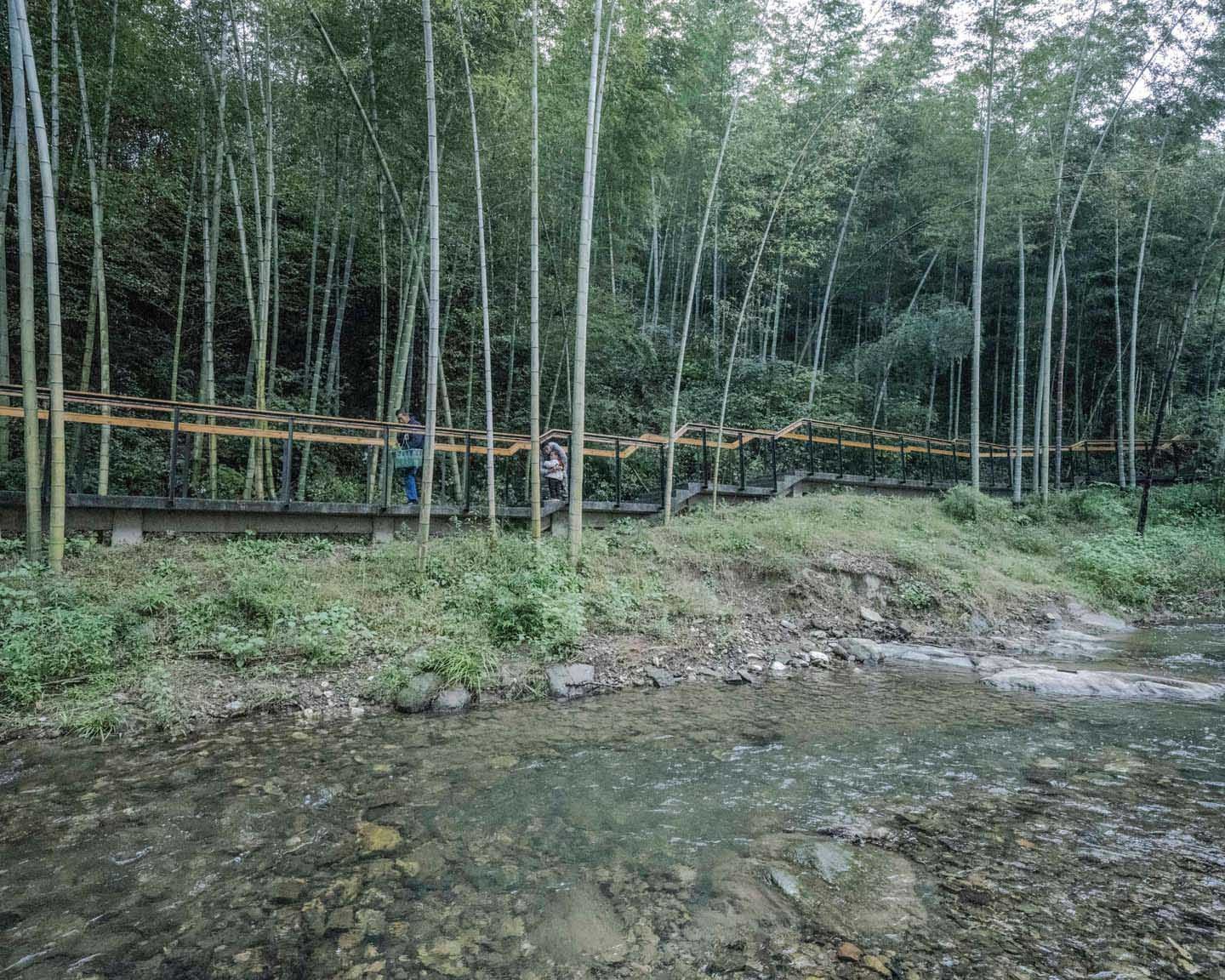
• Waterfront Plank Road
The original revetments on both sides of the current river are the best rural scenery. Through simple reviews, we have set a waterfront plank road connecting all the junction points, which also provides convenience for the villagers to farm and enter the mountain. One part of the trail is located at the waterside and among the water plants, while the other part lies at the hillside and above the bamboo forest. The relationship between the footpath and water is cordial and natural, providing a scenic route for tourists to experience the rural waterfront scenery.

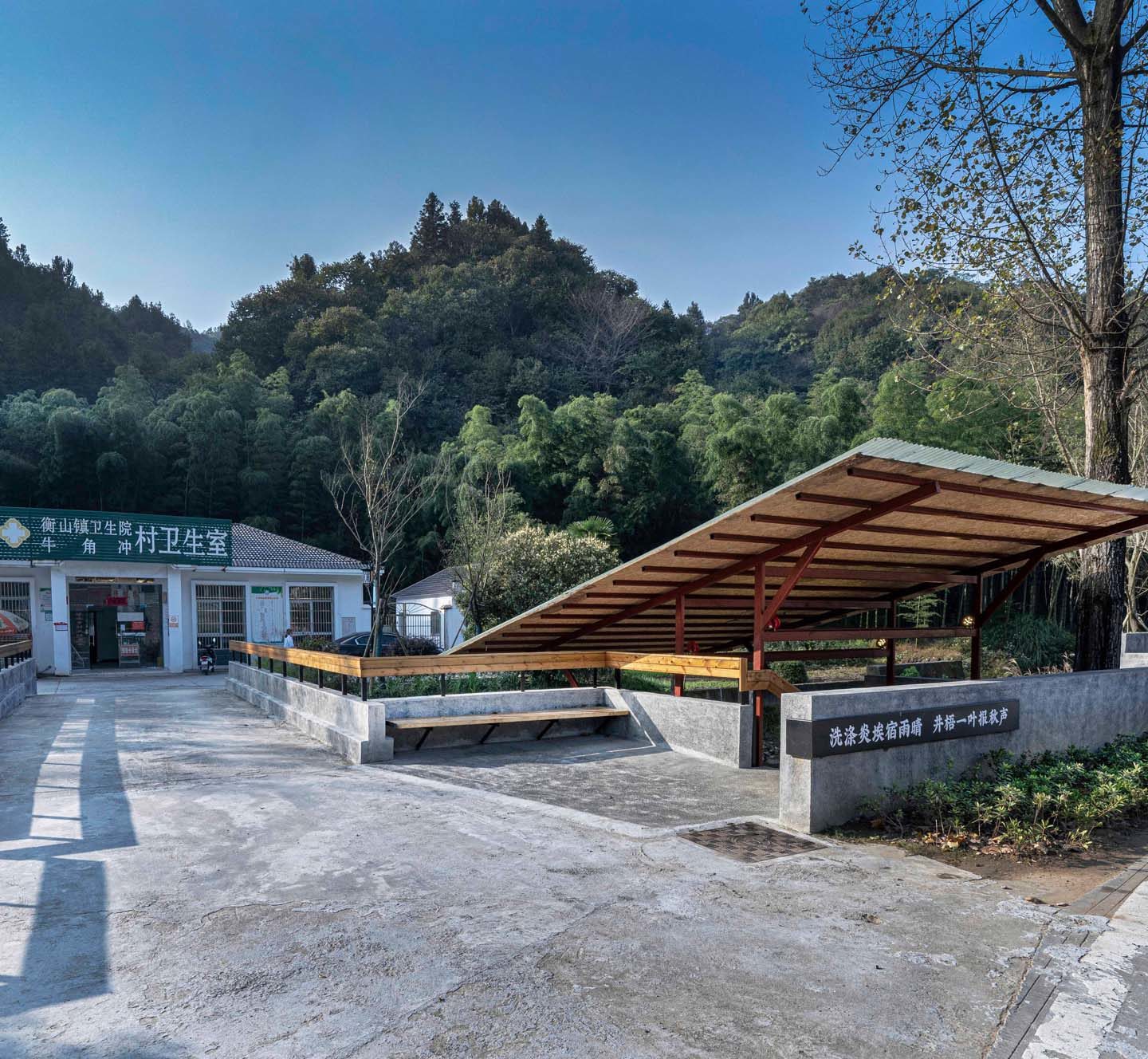
• Village Committee Square
Taking into account the trees in the existing Village Committee Square, the partial reconstruction of the square is carried out and a porch is newly built, which provides a comfortable space for villagers’ daily activities and rest.
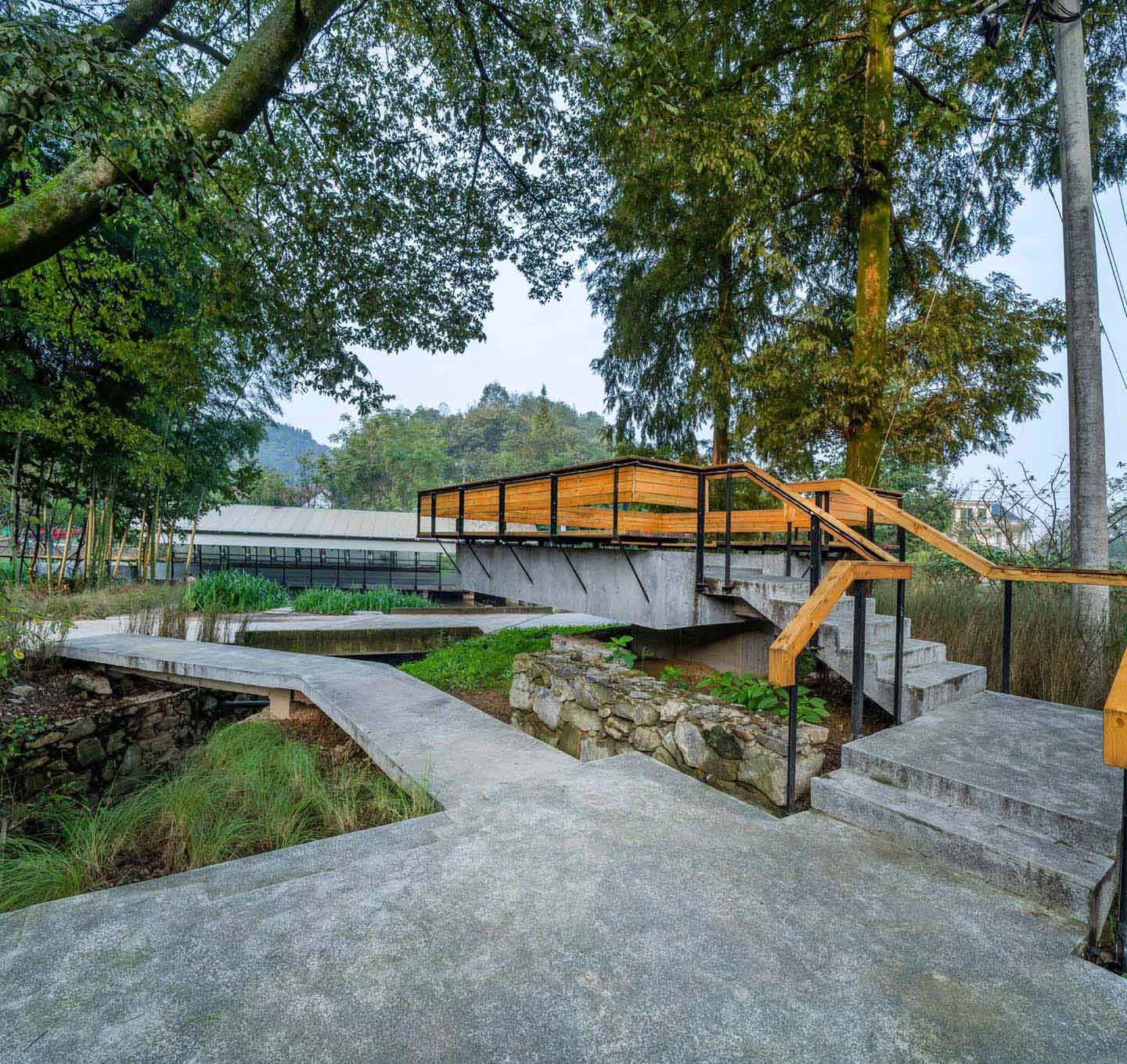

Impact of the Project
When the project is complete, the popularity of the waterfront laundry quay is unexpected. Every day from 7:00 am to 10:00 am is the liveliest time when the villagers gather together and wash clothes and chat. Now the quay is not only a functional facility for washing clothes but an information center and social arena, where people in the small village chat and gossip. And when it rains, the villagers could rest in the weather corridor nearby. In short, with the activation and improvement of the scene of daily rural life, the project has revived the originally declining rural public space with the help of the river and reshaped the landscape of rural life adjacent to water.

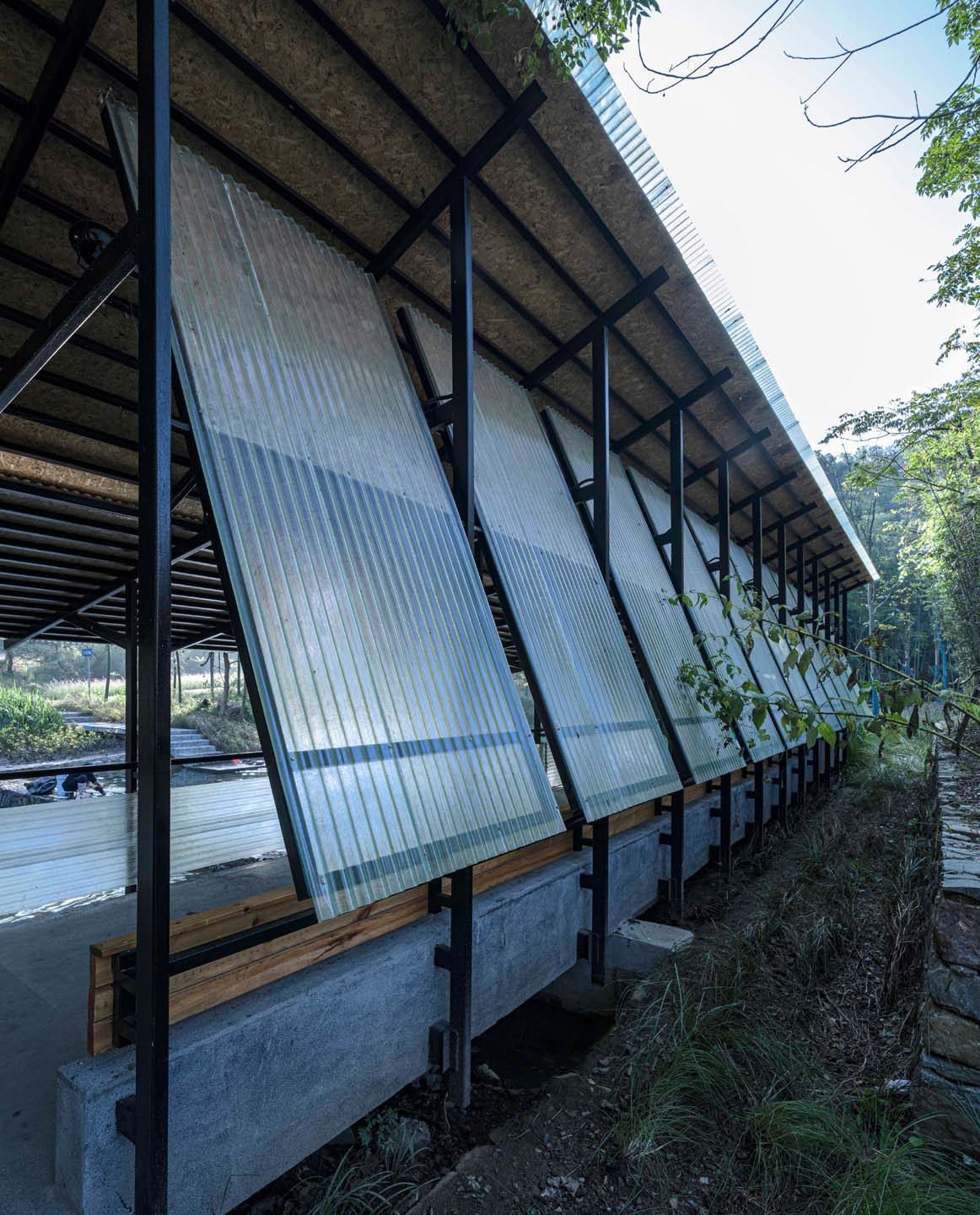
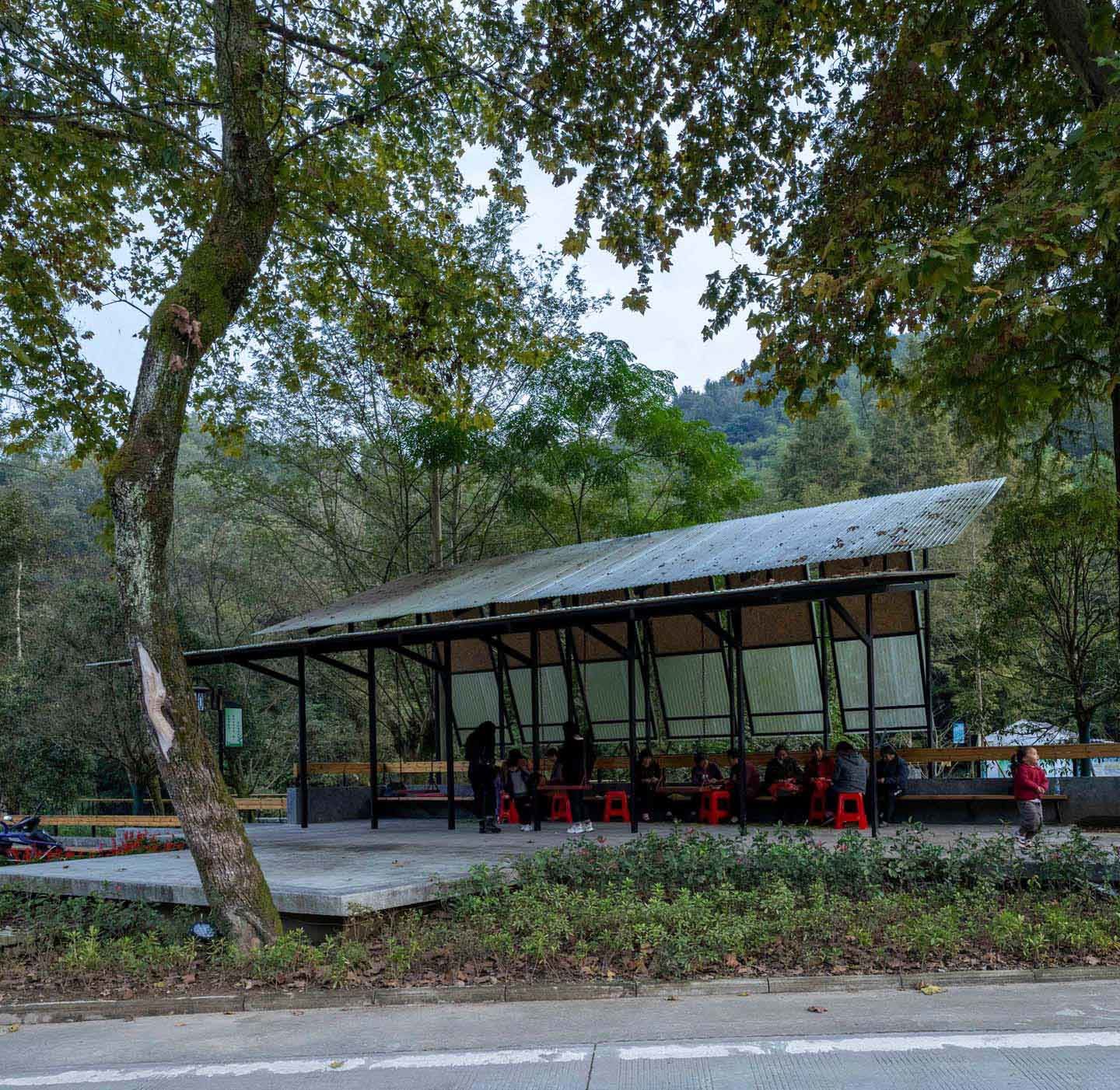
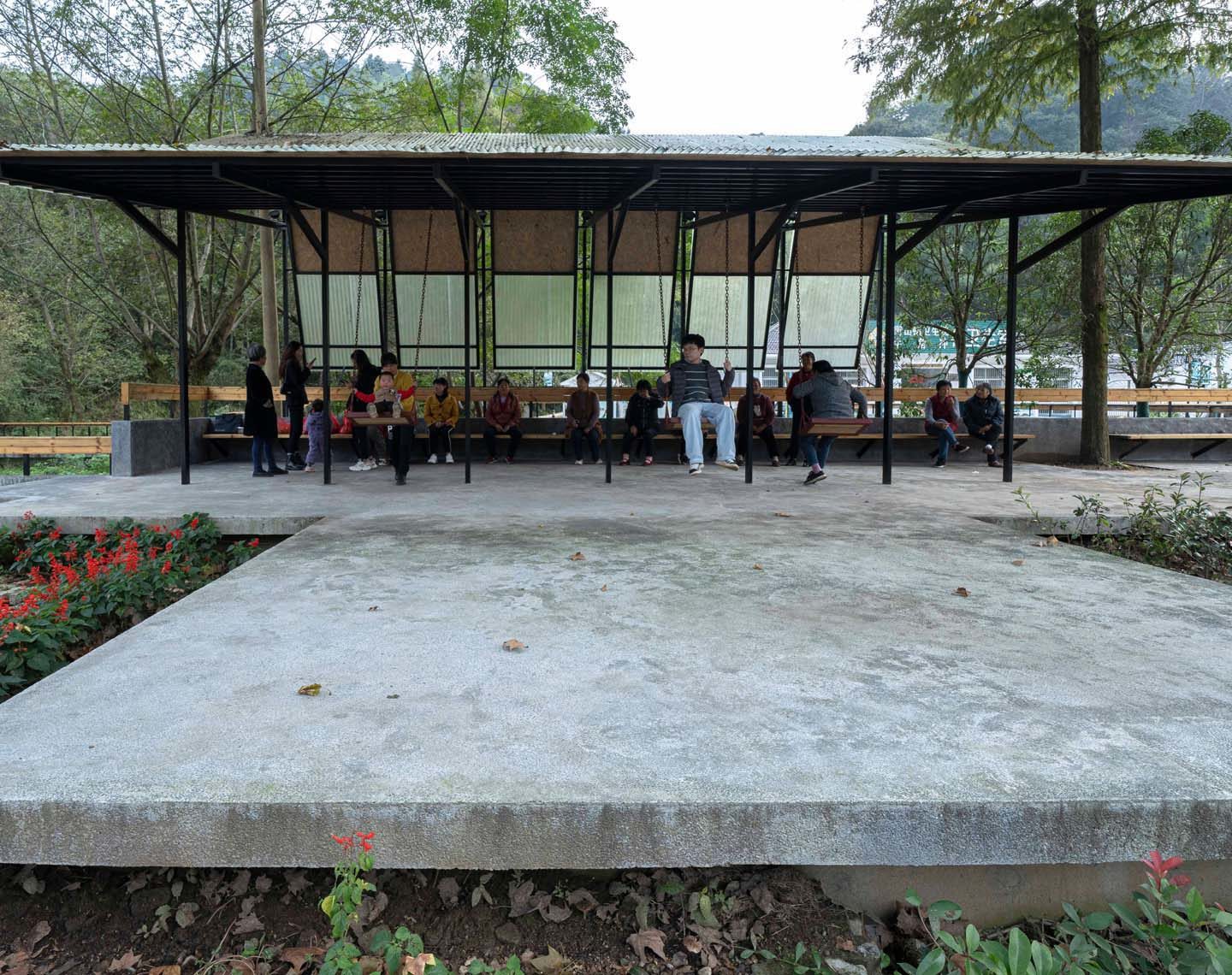


The project description is provided by the architects.



